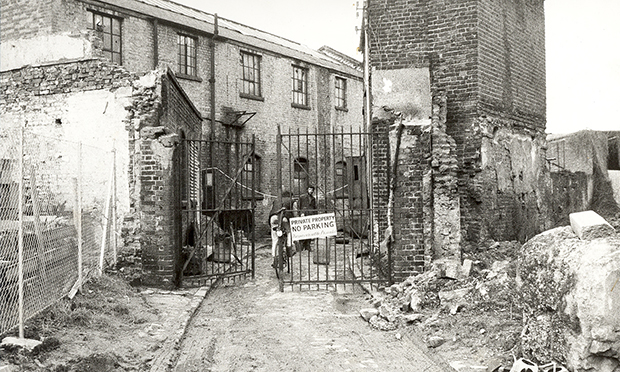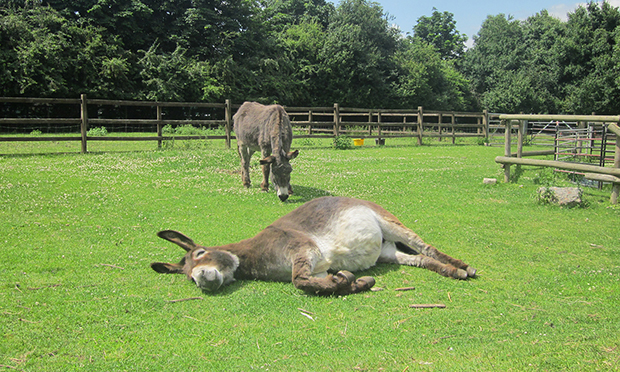Hackney City Farm celebrates 30 year anniversary
At the start, building up a roster of animals was a patchwork affair.
“In the beginning, the horse came with Carol, who was a local person. There were some rabbits, which actually came from Bridgewater in Somerset because a lady wanted to help us. Some were bought, some of the chickens were incubated through school projects. Turkeys were brought in and… er, prepared for Christmas, with the community plucking them.”
Such a gathering of livestock – described by David Walters, who oversaw it in the early 1980s – is part of the huge number of things you need to do if you want to transform an abandoned brewery on Hackney Road into a working farm.
Hackney City Farm, as it exists today, is a picture of what you’ll end up with: two and a half acres complete with pigs, goats, geese, ducks, chickens, donkeys, rabbits, guinea-pigs, occasional sheep, fruit trees and bushes; a school where 10 pupils who have been excluded from other schools in the borough receive a full-time education; and a café which many people originally thought was very expensive but which today is probably one of the cheapest on the road.
Taking Stock
It’s now 30 years since Hackney City Farm got underway, and it is celebrating with an Arts Council-funded project called Stepping Out, a series of interactive displays and installations featuring many of Walters’ photographs from the early days: horses and carts, school children planting crops, and workmen zooming across slow-exposure film looking like constructive ghosts.
It took six years for the idea of Hackney City Farm to become a reality. In 1978 Walters had just finished a course in youth and community work, and was making a
living as a milkman, looking around for something else to do. He wanted to be part of a project that would go beyond the limits of his classes: “When I’d been doing my course I realised at the end I was interested in doing a community project with all family ages, not just youth work.”
He soon found the group which was eventually named the Hackney City Farm Movement, a collection of teachers, social workers and local people who had their eyes on a couple of old garages off Mount Pleasant Road, with a view to creating a community garden, home to flora and fauna.
“They were interested in getting something which was a family-orientated project,” says Walters. “They liked the idea of animals because they brought people closer to each other. One of the philosophical arguments was that if you cared for animals and you cared for plants, then you actually cared more for other people. And it made the way you interacted with people more positive.”
Geography was different in the late 1970s. Walters relates how at meetings half a mile from where he lived people would say to him: “You don’t live round here”.
“The borough then was still a lot of little villages,” says Walters. “You could cross all sorts of interesting boundary lines, and you were either part of something or you weren’t.”
Walters didn’t think the garages were up to much and, overcoming his outsider status, managed to persuade the group to set up a steering committee to find a proper site. In the end, they looked at more than 200 possible locations, and were offered the Middlesex Filter Beds on Hackney Marshes. But the group liked the filter beds as they were and didn’t want to turn them into a farm.
“You don’t just take something because it’s available,” Walters contends. “You take it because you can build on its intrinsic shape. Sometimes things that are left unmanaged end up being quite beautiful forests. It might be better not having anything there, having it as an open space.”
Hackney Council was on board from early on. Councillors were “quite keen to have a different type of community facility which would engage with people”, recalls Walters. “There were the various animal sites, in Clissold for example, but they were quite passive – you were viewing. Volunteers weren’t involved with them and
people were kept at a distance.”
The city farm they had in mind would, from the start, be centred around active participation. “One of the things we learnt was that you’ve got to work with people and they’ve got to manage things as well.”
End in site
Finally the group found the Hackney Road site, which the farm has occupied ever since. Planning permission hinged on proving animals and manure wouldn’t poison the children’s hospital next door. Trips to the farm and interactions with the animals would in fact eventually become a key part of care offered at the hospital.
Walters loves this kind of wider interaction with the surrounding community, which the farm has developed. “What the farm is fundamentally is a community resource for the local area,” he says. “The fact it has animals in it is only part of its attraction. We were there to provide facilities where possible for people who had none.” This extended to simply letting local people use the farm’s photocopier.
Walters has developed a poetic philosophy of community projects. “If you have something that is valuable it gets shown in different ways,” he explains. “You get attracted in the dark to someone striking a match; you look at the light. The farm does that in many ways. It draws people in and then it draws out of them other things. So they might come in for a walk, they might come in to the café. They might come in for a pottery class. They might come in because they’re attracted by the atmosphere. It happens to have animals and plants, which is important because a lot of that is missing.”
Such projects need to be open to change. If a resource is “rigid”, Walters says, then it “loses its locality”. The farm “needs to be open-minded about the possibilities of what might happen. Every farm has got a different constituency, a different set of activities and it’s all to do with the energies of the people involved.”
Originally granted a 90-year lease, the farm is secure for some time to come. Asked what changes he sees for the farm in the future, Walters returns to the site’s original infrastructure as a brewery, including its 90-ft well. “You could end up getting Hackney spa water out of that,” he proposes.
The farm also has plans to try and acquire around five acres of land outside London, to act as somewhere for Hackney people to escape to. Anyone with such an asset is invited to get in touch.
For the Stepping Out project, the Farm is also trying to trace other founding members.
If you were involved in Hackney City Farm at any point of its development, or know someone who was, please email charlie@hackneycityfarm.co.uk or drop into the farm at 1A Goldsmiths Row, E2 8JQ


